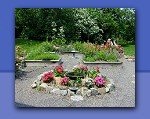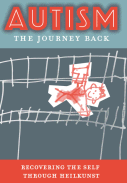The Dynamic Legacy: from Homeopathy to Heilkunst
Table of Contents
Book One Book Two

BOOK ONE
INTRODUCTORY SECTION
Hahnemann
Copyright
Dedication
Foreword
Comment by Anna Quinn
Introduction
Comment on Structure
Epistemology of Wholeness
Newton's Way of Seeing Color
Goethe's Way of Seeing Color
Reading Hahnemann's Organon
Glossary of Terms
Note on the Use of the Terms Homeopathy and Homeopathic
VOLUME I: HEILKUNST IN HISTORICAL CONTEXT- THE ORIGINS AND DEVELOPMENT OF THE DYNAMIC SYSTEM IN THE EVOLUTION OF HUMAN CONSCIOUSNESS
Section A: Hahnemann's Discovery of the Dynamic Nature of Disease
Chapter 1: History as Re-enactment in Imagination
Chapter 2: Hahnemann's Disenchantment with Medicine
Chapter 3: Laying the Foundations of a New System (1790-1805)
3.1 Essay on a New Principle (1796)
3.1.1 Two Kinds of Sources for Materia Medica
3.1.2 Two Types of Disease
3.1.3 Two Principles of Treatment
3.1.4 Two Actions of a Medicine: Direct and Indirect
3.1.5 Length of Direct and Secondary Action
3.1.6 Action of the Drug and Repetition of Dose/Second Remedy
3.2 Obstacles to Certainty and Simplicity (1797)
3.2.1 Regimenal Disease
3.2.2 Geographical Influences
3.3 Antidotes to Some Heroic Vegetable Substances (1798)
3.4 A Preface (1800)
3.5 Brown's Elements of Medicine (1801)
3.6 Aesculapias in the Balance (1805)
3.7 The Medicine of Experience (1805)
Chapter 4: Consolidating Heilkunst and Prelude to Dual Remedies (1805-1833)
4.1 First Edition of the Organon: Preface (1810)
4.2 Chronic Miasms and the Chronic Diseases Arising Therefrom
4.3 Contrast of the Old and the New Systems of Medicine
4.3.1 Duration of Action of the Remedy
4.3.2 From Chemical Action to Dynamic Action
4.3.3 Dual Nature of the Living Power
4.4 Summary of Hahnemann's Views on Dose and Repetition
4.5 Summary of Hahnemann's Views on Disease Prior to 1833
4.6 Isopathy and Isodes/Nosodes: Tonic Medicines
4.6.1 History of Isopathic Remedies
4.6.2 Hering and Isopathic Remedies
4.6.3 Lux and the Thesis of Equality
4.6.4 The Modest Author (Lux's Pamphlet)
4.6.5 Hahnemann's Views on Isopathy and Isopathic Remedies
Chapter 5: The Case for Dual Remedies
5.1 Aegidi's Famous Letter on Dual Remedies (1833)
5.2 Boenninghausen's Dual Remedy Case
5.3 The Import of Aegidi's Letter of 15 May 1833)
5.3.1 The Köthen Peace Conference
5.4 Hahnemann's Decision to Withdraw the Dual Remedy Paragraph
5.5 The Single Remedy and the Main Pillars of Homeopathy
5.5.1 Hahnemann's Pillars
5.6 The Paris Period
5.6.1 Two Cases from Hahnemann's Final Year
5.7 Dual Remedy Timeline
Chapter 6: Boenninghausen's Repertory: Concordances and Dual Remedy Prescribing
6.1 History of the Repertory
6.2 Initial Facts
6.3 Section on Concordances
Chapter 7: Simultaneity of Action versus Simultaneity of Ingestion: Dual Remedies versus Alternation and Intercurrent Remedies
7.1 Simultaneity of Action Versus Simultaneity of Ingestion
7.2 Hahnemann's Continued Use of Dual Remedies
7.3 Polypharmacy and Unipharmacy
7.4 Dual Remedies Versus Alternating and Intercurrent Remedies
7.5 Dual Remedy Prescribing: A Watershed for Hahnemann
7.6 Hahnemann's Receptivity to Dual Remedy Prescribing
Chapter 8: Aegidi and Lutze on Dual Remedies
8.1 Aegidi's Article on Dual Remedies (1834)
8.1.1 Suggestions for the Extension of Homeopathic Technique
8.2 Lutze's Chapter on Dual Remedies
8.2.1 Textbook of Homeopathy
8.3 Other Issues Raised by Lutze
8.3.1 Antidotal Relations
8.3.2 Symbiosis
8.3.3 Sexual Potency
8.4 The Reaction to Lutze
Chapter 9: Suppression of the Dual Remedy Approach: The Beginnings of Historical Revisionism (1865)
Chapter 10: The Two Sides After Hahnemann: The Unconscious Thread
10.1 Repertories and Sides
10.2 Keynote Prescribing
10.2.1 Origin of the Concept
10.2.2 Characteristic Totality from the Somatic and Psychic Sides
10.2.3 Vithoulkas and Essence Prescribing
10.2.4 Sankaran's State-based Prescribing
10.2.5 The Red Thread of a Case
10.2.6 The Keynote in Hahnemann
10.2.7 Graph of Keynote Development
10.3 Kent and the Two Sides
10.4 Intercurrent Prescribing
10.5 Nosodes
10.5.1 Continental Tradition
10.5.2 Native English Tradition
10.5.2.1 Burnett
10.5.2.2 Clarke
10.5.3 Minor Key in North America
Chapter 11: Historical Dev't of Dose and Potency
11.1 Dynamization
11.2 Optimal Dose
11.3 Changes in 1837
11.4 LM or Q Potency
11.5 Use: 1796-1816
11.6 Medicated Globules
11.7 Succussion
11.7.1 Succussion and Dilution
11.8 Wet Versus Dry Dose
11.9 Summary
11.10 Repetition of Dose
VOLUME II: TEXTBOOK -THE TEACHINGS OF HEILKUNST
Section A: Hahnemann's System of Remediation
Part 1: Basic Concepts
Chapter 1: The Story of a Medical Genius
Chapter 2: The Foundation of Medicine in Natural Law: Laws of Similar and Opposite Resonance
2.1 Three Streams of Medicine in Western History
Chapter 3: The Birth of Rational Medicine (Medicine Based on Principle)
3.1 Dissimilar Diseases
Chapter 4: Provings: The Basis for Homeopathy
4.1 Artificial Diseases
Chapter 5: The Organon: Hahnemann's Formal Call for Medical Reform
5.1 Extended Organon
5.2 First Proving Group
Chapter 6: Provings: Do They Affect Your Health?
6.1 Artificial and Natural Disease
Chapter 7: Two Approaches to and Two Types of Specific Remedies for Disease
7.1 From Two Specifics to Two Sides of Disease
7.1.1 Pathic Side of Disease
7.1.2 Tonic Side of Disease
7.2 Hahnemann's Criticism of the Old School of Medicine
7.3 Causal and Symptomatic Indications
Part 2: Disease as a Dynamic Duality
Chapter 8: Disease: Material or Dynamic in Origin?
8.1 Wesen and Geist
8.1.1 Wesen: A Closer Look
8.2 False and True Disease
Chapter 9: Two Sides of the Living Principle
9.1 Sustentive Power (Lebens-Erhaltungs-Kraft)
9.1.1 References to the Sustentive Power
9.2 Generative Power (Lebens-Erzeugungs-Kraft)
Chapter 10: Initial Action and Counter-action
10.1 Two Types of After-Action
10.1.1 Two Questions
Chapter 11: Two Ways of Knowing (Wissen and Kennen)
Chapter 12: Putting the Two Sides Together
12.1 Functionalism
12.2 Functional Pairs
12.2.1 Geist and Wesen
12.2.2 Psychic and Somatic
12.2.3 Tonic and Pathic
12.3 Rheostat Model
Part 3: Disease Diagnosis
Chapter 13: Hahnemann's Disease Categorisation (Nosology)
13.1 Elements of Disease: Pathic Side
13.1.1 Gestalt and Image
13.1.2 Complex and Totality
13.2 Elements of Disease: Tonic Side
13.3 Modes of Disease
13.4 Temporality of Disease
13.5 Dimensions and Geneses of Disease: Tonic Side
13.6 Members Affected
13.7 Typology
Chapter 14: Identification of Disease: Pathic Side
14.1 Pathic Approach to the Specific Remedy
14.1.1 Elements of the Totality of Characteristic Symptoms
14.2 Totality of Characteristic Symptoms of the Disease
14.2.1 Matching the Symptoms to a Particular Disease
14.3 Characteristic Symptoms of the Disease
14.4 Symptom Complex Versus Symptom Totality
14.5 The Thermotic Principle for the Pathic Side of Disease
Chapter 15: Disease State and Other Tonic Elements
15.1 State (Zustand)
15.2 Condition-State (Befindens-Zustand)
15.3 Dormant State
15.4 Psychic and Somatic States
15.5 Other Unific Elements
15.5.1 Stimmung - tonation
15.5.2 Affektion - the Affection
15.5.3 Gefühl - the Feeling (singular)
15.5.4 Eindruck - the Impression (& responsion)
15.5.5 Empfindung - the Sensibility (singular)
Chapter 16: Disease Origins and Dimensions
16.1 Regimenal Dimension
16.2 Homogenic Dimension
16.3 Pathogenic Dimension
16.4 Iatrogenic Dimension
16.5 Ideogenic Dimension
16.6 Principles of Disease Jurisdictions
Chapter 17: Homogenic Disease
17.1 Concept
17.2 Examples of Homogenic Disease and Remedies
Chapter 18: Self-Limiting versus Protracted Diseases
18.1 Self-Limiting Disease
18.2 Other Acute Diseases
18.3 Treatment of Self Limiting Disease Versus Protracted Disease
18.4 Protracted Disease
Chapter 19: The Chronic Miasms versus the Chronic Diseases
19.1 Idiopathic Disease
19.2 The Chronic Miasms A Quick Overview
Chapter 20: The Highest Diseases (Ideogenic Dimension)
Chapter 21: The Deepest Disease (Pathic Side)
Chapter 22: Natural Diseases And Diseases of the Spirit
22.1 Natural Disease References
22.2 Mental and Emotional Diseases
22.3 Progression of Psychic Diseases
22.4 Moral Diseases
22.5 Moral Remedies
Part 4: The Basis for Prescribing
Chapter 23: Treating the Disease versus Treating the Patient
Chapter 24: More Than One Disease at a Time: Concordant and Sequential
Chapter 25: The Emergence of Dual Remedy Prescribing
Chapter 26: One Remedy per disease
Part 5: Guidelines for Treatment
Chapter 27: What is Cure?
27.1 Allopathic Approach
Chapter 28: Direction of Cure
28.1 Differences in Tonic and Pathic Direction of Cure
Chapter 29: Homeopathic Aggravation
Chapter 30: Healing Reaction
Chapter 31: Intervening in the Healing Reaction: New Symptoms
Chapter 32: Suppression
32.1 Proving a Remedy
32.2 Acute Disease Treatment
32.3 Potency
Part 6: Constitution and Prescribing
Chapter 33: Constitution: What Does it Mean?
33.1 Hahnemann's References to Constitution
33.2 State of Health
Chapter 34: Constitutional Types: Genotypes and Phenotypes
34.1 Guide to Constitutional Typing
Chapter 35: Kent and the Birth of Constitutional Prescribing
Chapter 36: Identifying the Genotypical and Phenotypical Constitutions
36.1 Genotype
36.2 Phenotype
36.3 Determining the Constitution
Part 7: Further Development of Hahnemann's System
Chapter 37: Hahnemann's Blueprint
Chapter 38: Regimen (Book 2)
Chapter 39: Homotoxicology
39.1 The Disease Process at the Tissue Level
39.2 The Table of Homotoxicosis
39.3 Progressive and Regressive Vicariation
Chapter 40: State-based Prescribing
40.1 The Physician's Reaction
Chapter 41: Isotherapeutic Treatment of Disease
41.1 Law of Succession of Forces
41.2 Personalisation
41.3 Diet and Physical Manipulation
41.4 Treatment of Emotional Traumas
Chapter 42: Layers Theory
42.1 Patients and Disease
42.2 Insights
Chapter 43: Prophylaxis
Chapter 44: Graph - Development of the Two Sides
Part 8: Selected Advanced Issues in Heilkunst
Chapter 45: Hahnemann and the Natural Healing Power
45.1 Why Medicine Should Not Imitate Crude Nature
45.2 Dual Nature of the Living Power
45.3 What Hahnemann Said
45.4 True Imitation of Nature
45.5 Role of Medicine Versus Natural Healing Power
45.6 Two Other Instances
Chapter 46: Heilkunst and Heilkünstler
Chapter 47: Modern Views on Isopathic Remedies
47.1 Isopathy in Other Contexts
Chapter 48: Medical and Musical Dynamism
Chapter 49: Opposites (contraria) and Similars (similia)
49.1 Law of Opposites Cannot Cure Natural Disease
49.2 Removal of Cause
49.3 Emergencies
49.4 Healing and Curing
49.5 Spiritual Diseases
Chapter 50: Pathic and Tonic Direction of Cure
Chapter 51: Dose and Harm
Chapter 52: Arousability and Sensibility
52.1 Arousability
52.2 Sensibility
Chapter 53: Obstacles to Cure in the Physician
Chapter 54: Typology versus Pathology
Chapter 55: Hahnemann's Case-taking of the Old School Mentality - Ideogenic Disease
55.1 The Dynamic State of Mind (Health)
Chapter 56: Therapeutic Approaches Within Heilkunst
56.1 Treatment Curriculum for the Patient
56.1.1 Learning the Basics
56.1.2 Graduating to the Treatment of Specific Diseases
56.1.3 Postgraduate Studies: The Highest and the Deepest Diseases
Chapter 57: Dose and Potency
57.1 From Crude to Dynamic Medicines
57.2 Creating Potencies
57.3 LM Potency
57.4 Summary of Principles
VOLUME III: CRITICAL ANALYSIS OF THE TENETS OF TRADITIONAL TEACHINGS
Section A: Homeopathy
What If Most of What You Were Taught About Homeopathy Was Wrong?
Chapter 1: The Three Classical "Principles"
Chapter 2: Kentianism Re-examined
Lecture I
Lecture II
Lecture III
Lecture IV
Lecture V
Lecture XI
Lecture XII
Lecture XIII
Lecture XVII
Lecture XXIV
Lecture XXXIV
Lecture XXXVI
Summary
Chapter 3: Close's Genius of Homeopathy
3.1 Interpretations
3.2 Schools of Philosophy
3.3 Scope
3.4 Unity of Medicine
3.5 Life, Health & Disease
3.6 Susceptibility
3.7 Pathology
3.8 Symptomology
Chapter 4: Roberts' Principles
Chapter II
Chapter III
Chapter IV
Chapter VI
Chapter VIII
Chapter X
Chapter XI
Chapter XIV
Chapter XVI
Chapter XVIII
Chapter XIX
Summary
Classical Homeopathy vs. Dynamic Heilkunst
Appendix: A Preliminary Examination of Traditional Clinical Case Presentation
BIBLIOGRAPHY
Top of Page
BOOK TWO
VOLUME I: HISTORY OF REGIME
Introductory Parts
Preface
The Physis
The Power of the Intellect
What is Regimen?
False Polarity in Regimen
Chapter 1: Hahnemann and The Beginnings of a Science of the Physis
1.1 Diet for Body, Mind, Soul and Spirit
1.1.1 Sources of Energy
1.2 Hahnemann's Views on Physical Regimen
1.3 Resonance versus Attraction
1.4 Several Points
1.5 Chronic Disease: Directives
1.6 Natural Diet
1.7 Organon - 6th Edition - Directives
1.8 Exercise
1.9 Social Regimen
1.10 Coition
1.10.1 Lutze and Sexual Potency
1.11 Summary of Hahnemann's Principles
1.11.1 Supersensible Aspects of Hahnemann's Principles
Chapter 2: Impact of Industrialization on Physical Regimen
2.1 Emergence of the "Food" Industry
2.1.1 Impact on our Digestive System
2.2 The Destructive Effects of Industrialization on Nutrition
2.2.1 The Natural Hygiene Movement in America
2.2.1.1 Natural Hygiene - Internal - Sequential Eating
2.2.2 Dr. John H. Tilden and Toxemia
2.2.3 Dr. Walter Bradford Cannon and Homeostasis
2.2.4 Dr. Weston Price and Natural Diets
2.2.5 Dr. T.L. Cleave and The Role of Fiber
2.2.6 Dr. Henry Bieler and Detoxification
Chapter 3: Key Pioneers in Modern Regimen
3.1 American Herbal Roots
3.1.1 Harry Hoxsey's Formula
3.1.1.1 Therapeutics
3.1.2 Nurse Rene Caisse and Essiac
3.1.2.1 Therapeutics
3.2 Max Gerson and Potassium-Based Diets
3.2.1 External Metabolism
3.2.2 Gerson's Approach
3.2.3 Role of the Liver
3.2.4 Emotional Plague Reaction
3.2.5 Importance of Healthy Soil
3.2.6 Therapeutics
3.3 Work on the Pleomorphic Nature of Microorganisms
3.3.1 Rife and the Cancer Microbe
3.3.1.1 Opposition Mounts
3.3.1.2 Rife's Discovery of the Cancer Virus
3.3.1.3 True Scientific Capacity: Feeling
3.3.1.4 Start of Cancer Treatment
3.3.1.5 The Emotional Plague Reaction
3.3.2 Enderlein and The Acid/Alkaline Balance
3.3.2.1 Isopathic Treatment
3.3.2.2 Three Dogmas of Conventional Microbiology
3.3.2.3 Therapeutics
3.3.3 Gaston Naessens and the Somatid Cycle
3.3.3.1 Somatid Discovery
3.3.3.2 Emotional Plague Reactions
3.3.3.3 Therapeutics: 714X
3.4 Modern Developments
3.4.1 Dr. Batmanghelidj and the Water Cure
3.4.1.1 The Role of Water in Health
3.4.1.2 Inherited Effects
3.4.1.3 Functional Identity of Psychic and Somatic Dehydration
3.4.1.4 Psora and Dehydration
3.4.1.5 Role of Sodium (Salt)
3.4.2 Dr. Chachoua and Induced Remission Therapy
3.4.2.1 Toxic Die-Off Avoided
3.4.2.2 Pleomorphism
3.4.2.3 Emotional Plague Reactions
3.4.2.4 Unprecedented Legal Victory
3.4.2.5 Therapeutics
3.4.3 Dr. Ling and the New Cellular Physics
3.4.3.1 Association-Induction Hypothesis
3.4.3.2 Tissue Damage
3.4.3.3 Links With Gerson
3.4.3.4 Nuclear Magnetic Resonance and The A-I Hypothesis
3.4.3.5 Links With Reich
3.4.3.6 Therapeutic Implications
3.4.4 D'Adamo and Blood Types for Diet
3.4.4.1 Lectins
3.4.4.2 Indicans Scale and Test
3.4.4.3 Ethnicity and Geography
3.4.4.4 Therapeutics
3.4.5 Dr. Gold and Hydrazine Sulphate
3.4.5.1 Lactic Acid
3.4.5.2 Cover-up
3.4.6 Dr. Hamer and the Link Between Cancer and the Brain
3.4.6.1 Healing Reactions
3.4.6.2 New Medicine versus Old
3.4.6.3 Therapeutics
Chapter 4: Sexology
4.1 Havelock Ellis
4.2 Birth Control: Maria Stopes and Margaret Sanger
4.3 The Discovery of Male Sexual Continence
4.3.1 Rev. John Humphrey Noyes and the Oneida Community
4.3.2 Dr Alice Bunker Stockham and Karezza
4.3.2.1 Dr. Alice Bunker Stockham's Early Years
4.3.2.2 Visit to India
4.3.2.3 Excerpts from Karezza
4.4 Dr. Wilhelm Reich and the Function of the Orgasm
Chapter 5: Timeline of Regimen Contributors
VOLUME II: THE THERAPEUTIC USE OF REGIMEN WITHIN HEILKUNST
Chapter 1: Key issues of Therapeutic Regimen
1.1 Scalar and Polar Logic
1.2 Virtual Chronic Disease Versus True Chronic Disease
1.3 The Need for Regimen
1.3.1 The Impact of Industrialization on Health
1.4 Constitutional Homeostasis
1.5 Law of Opposites
1.6 Lumination (Radiant Health)
1.7 Three Levels of Therapeutic Regimen
1.8 Qualifying the Patient
1.9 Role of Regimen in Supporting the Natural Healing Power
1.10 Hidden Curriculum in Allopathy
Chapter 2: Basic Model for Regimen
2.1 Cardinal (Compass) Points of Regimen
2.1.1 Polarities
Dormition
Nutrition
Hydration
Coition
2.2 Tonic and Pathic in Regimen
2.3 Light Metabolism
2.3.1 Inner Light Metabolism
2.3.2 Mineral Versus Organic Light
2.4 Creation and Re-creation (Air and Exercise)
2.4.1 Aeration
2.4.2 Movement (Recreation)
2.5 Cardinal points of Regimen in Detail
2.5.1 Hydration
2.5.2 Nutrition
2.5.2.1 Blood-Types and Diet
2.5.2.2 Supplements
2.5.2.3 Food Combining
2.5.2.3.1 Proteins
2.5.2.3.2 Starches
2.5.2.3.3 Sugars
2.5.2.3.4 Fats
2.5.3 Dormition
2.5.4 Coition
2.5.5 The Role of Sexuality in Relationships
Chapter 3: Physic: Part 1 - Manipulation/Energy Balancing
3.1 Manipulation
3.2 Energetic Balancing
3.2.1 Radionics
3.2.2 Biocircuits
3.2.3 Orgone Accumulators
3.2.4 Orgone Therapy
3.2.5 Reiki
3.2.6 Color
3.2.7 Massage/Accupressure
Chapter 4: Physic: Part 2 - Herbs (Phytotherapy) and Essential Oils (Aromatherapy)
4.1 Introduction
4.2 Aromatherapy
4.2.1 Aromatherapy Science
4.2.2 Our Sense of Smell
4.2.3 Energetic Frequency and Essential oils
4.2.4 The Combined Uses of Herbs and Essential Oils
4.2.5 Aromatic Molecule Production
4.2.6 The Healing Power of Aromatic Substances
4.2.7 Penetrating Power of Oils
4.2.7.1 Cautions
4.2.7.2 Applications
4.2.8 Oils to Tonify, Regulate and Disperse
Chapter 5: Physic: Part 3 - Flower Essences
Chapter 6: Physic: Part 4 - Tissue Salts & Bowel Nosodes
6.1 Tissue Salts
6.1.1 Introduction
6.1.2 Dual Effect
6.1.3 Dynamic Effect
6.1.4 The Patient
6.1.5 Specificity
6.1.6 Organ Relationships
6.2 Bowel Nosodes
6.2.1 History
6.2.2 List of Bowel Nosodes
6.2.3 Constitutions & Tissue Salts
6.2.4 Therapeutic Use
6.2.4.1 Selection
6.2.4.2 Dose & Potency
Chapter 7: Physic: Part 5 - Biotherapies
7.1 Gemmotherapy
7.2 Organotherapy
7.3 Oligotherapy
7.4 Lithotherapy
Chapter 8: Measures of Health
8.1 Capillary-dynamic Blood Test
8.2 Blood Crystalization
8.3 Reich Blood Tests
8.4 Live-Blood Analysis
8.4.1 Dry Layer Oxidative Stress Test
8.5 Urine Test
8.6 Hair Analysis
8.6.1 Nutrient Minerals
8.6.2 Toxic Minerals
8.7 Saliva Tests
VOLUME III: THE MIS-USE OF REGIMEN
Chapter 1: Problem With The Natural Health Movement
REGIMEN BIBLIOGRAPHY
Main Texts
Additional References
Top of Page
| 




